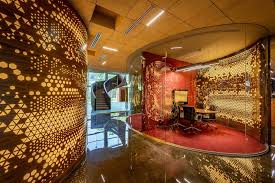The Future of Office Work: Trends and Predictions

Introduction
The concept of the office has undergone significant transformation, especially in the wake of the COVID-19 pandemic. With remote working becoming more prevalent, the traditional office environment is adapting to new needs and expectations. Understanding the future of office work is crucial as it affects productivity, employee wellbeing, and corporate culture.
Evolution of the Office
Historically, offices were designed as places for employees to work in close proximity, facilitating collaboration. However, recent years have introduced a range of flexible work options, including remote and hybrid models. According to a survey by PwC, 83% of employees prefer a hybrid model that combines both home and office work. This shift has prompted companies to reevaluate their workspace designs and policies.
Trends in Office Design and Functionality
Modern offices are increasingly being designed with flexibility and collaboration in mind. Open-plan layouts are being complemented by quiet spaces for focused work, and technology is playing a key role in bridging the gap between remote and in-office employees. Features such as hot-desking and meeting pods are becoming common, ensuring efficient use of space and catering to different working styles. Moreover, sustainable practices are rising in importance, with 38% of global employees indicating that a green workspace is essential to them.
The Importance of Office Culture
While the physical location of work is changing, the importance of office culture remains undiminished. Companies are recognising that fostering connections among employees is critical to maintaining morale and ensuring effective communication. Regular in-person meetings and team-building activities are being encouraged to strengthen relationships, which can be harder to nurture in a predominantly remote setting.
Conclusion
The future of office work is undoubtedly heading towards a more hybrid and flexible model. As businesses adapt to this new landscape, it is essential to prioritise employee needs and adapt office environments accordingly. The significance of workplace culture and collaboration cannot be overlooked as organisations navigate these changes. Moving forward, companies that effectively blend remote flexibility with a strong office presence are likely to foster greater employee satisfaction and productivity, solidifying the office’s role as a valuable asset in the professional world.







